Large Earthenware Studio Pottery Willow Dish After David Leach 1970s
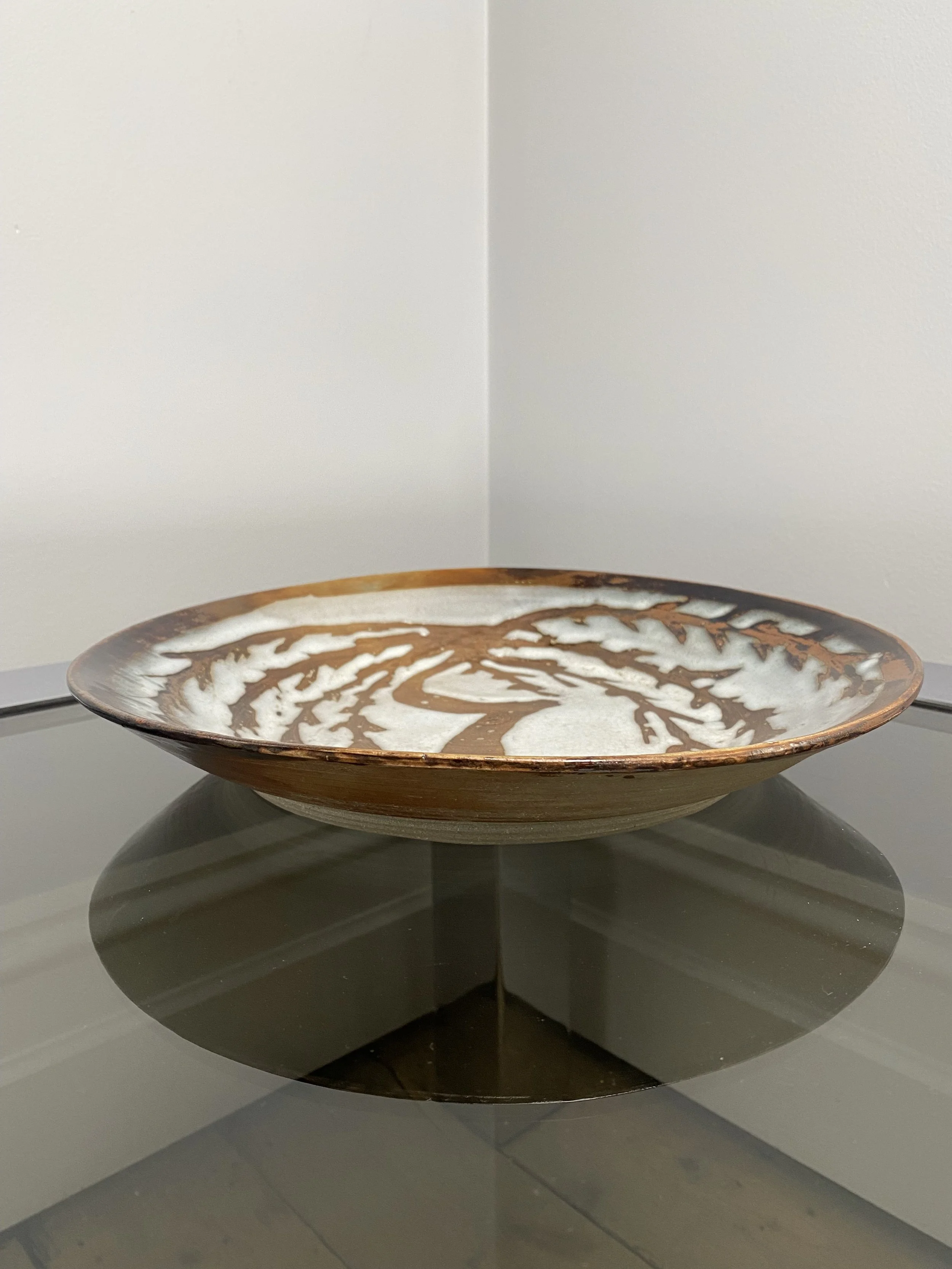
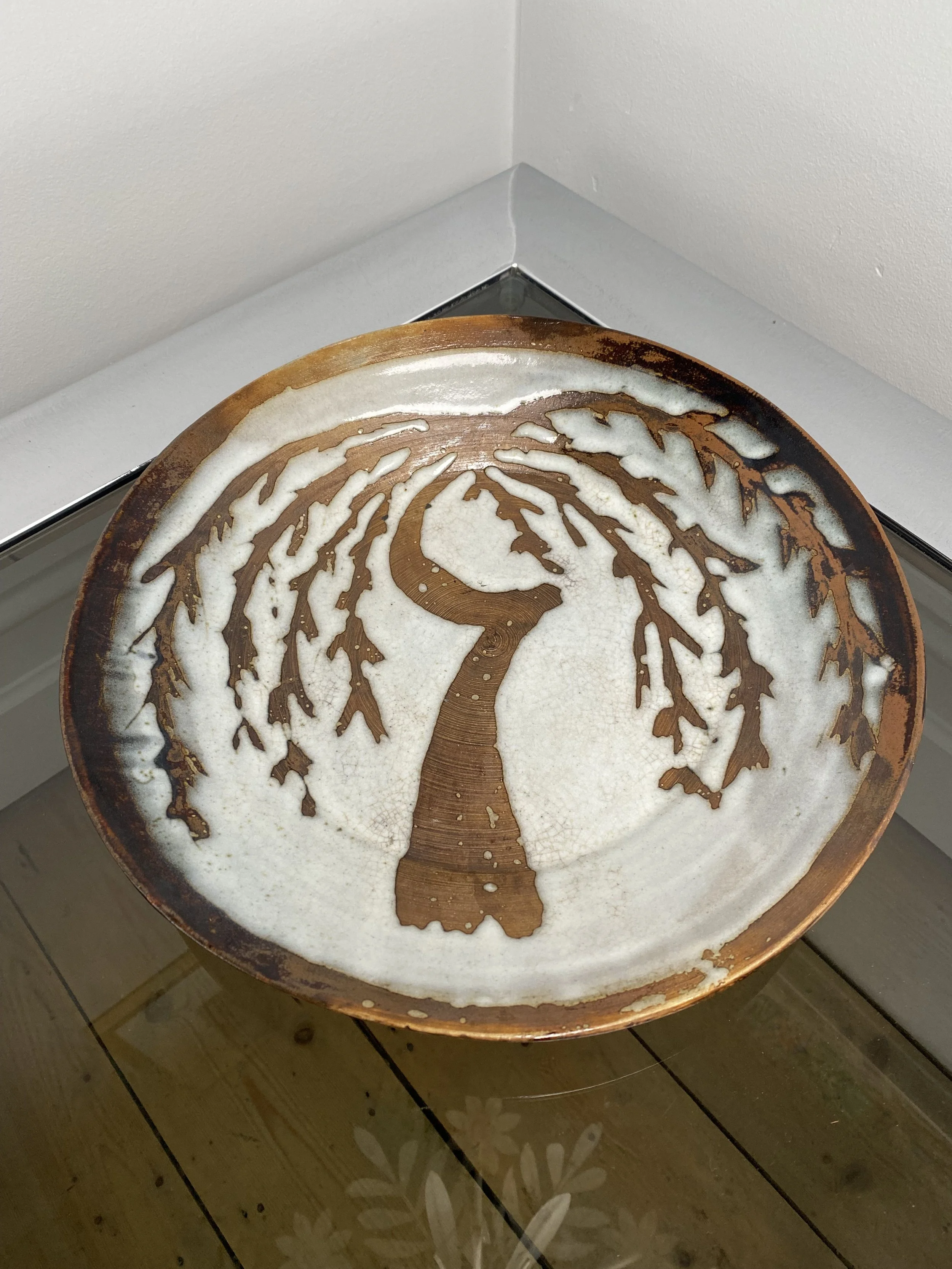
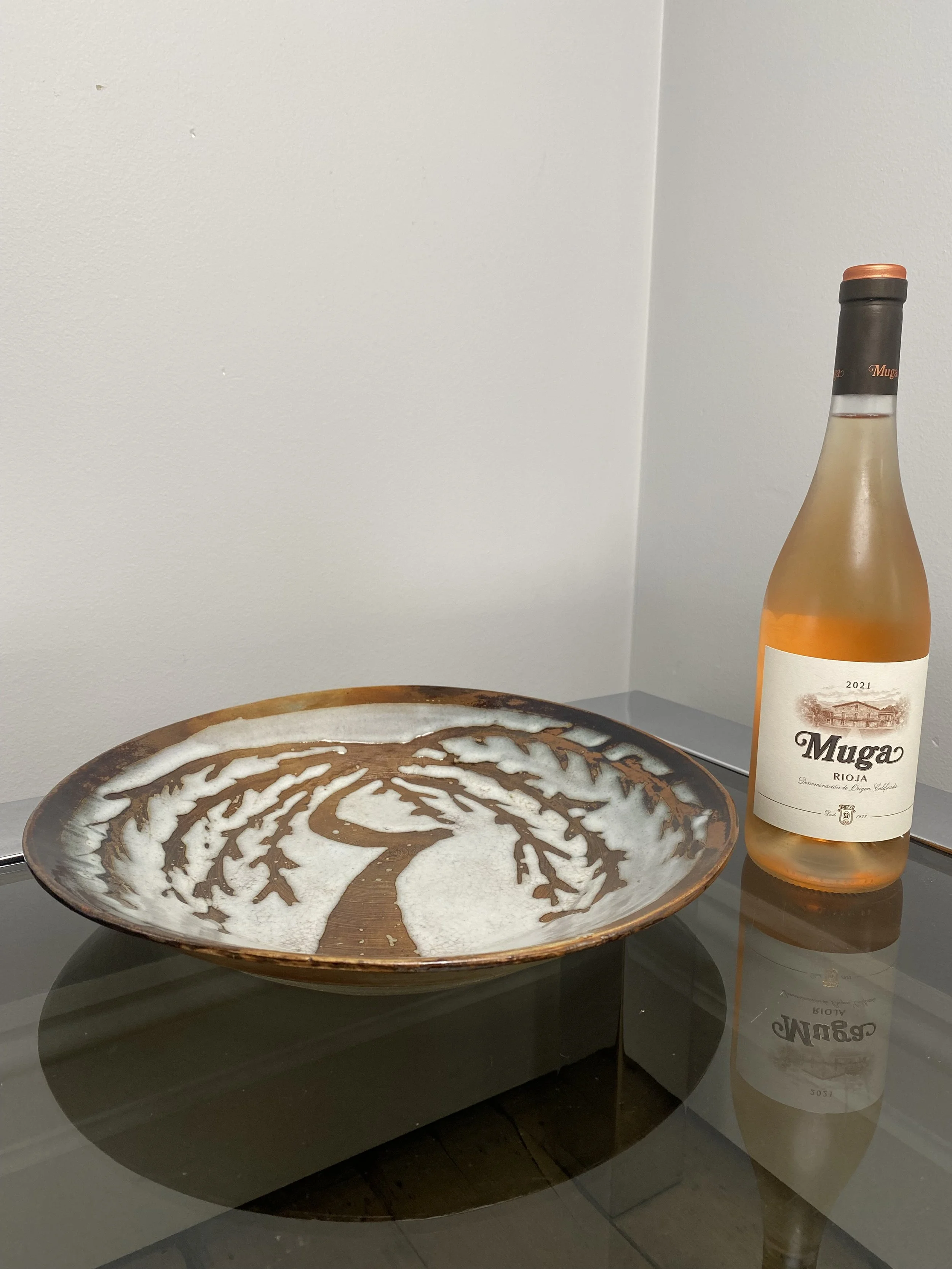
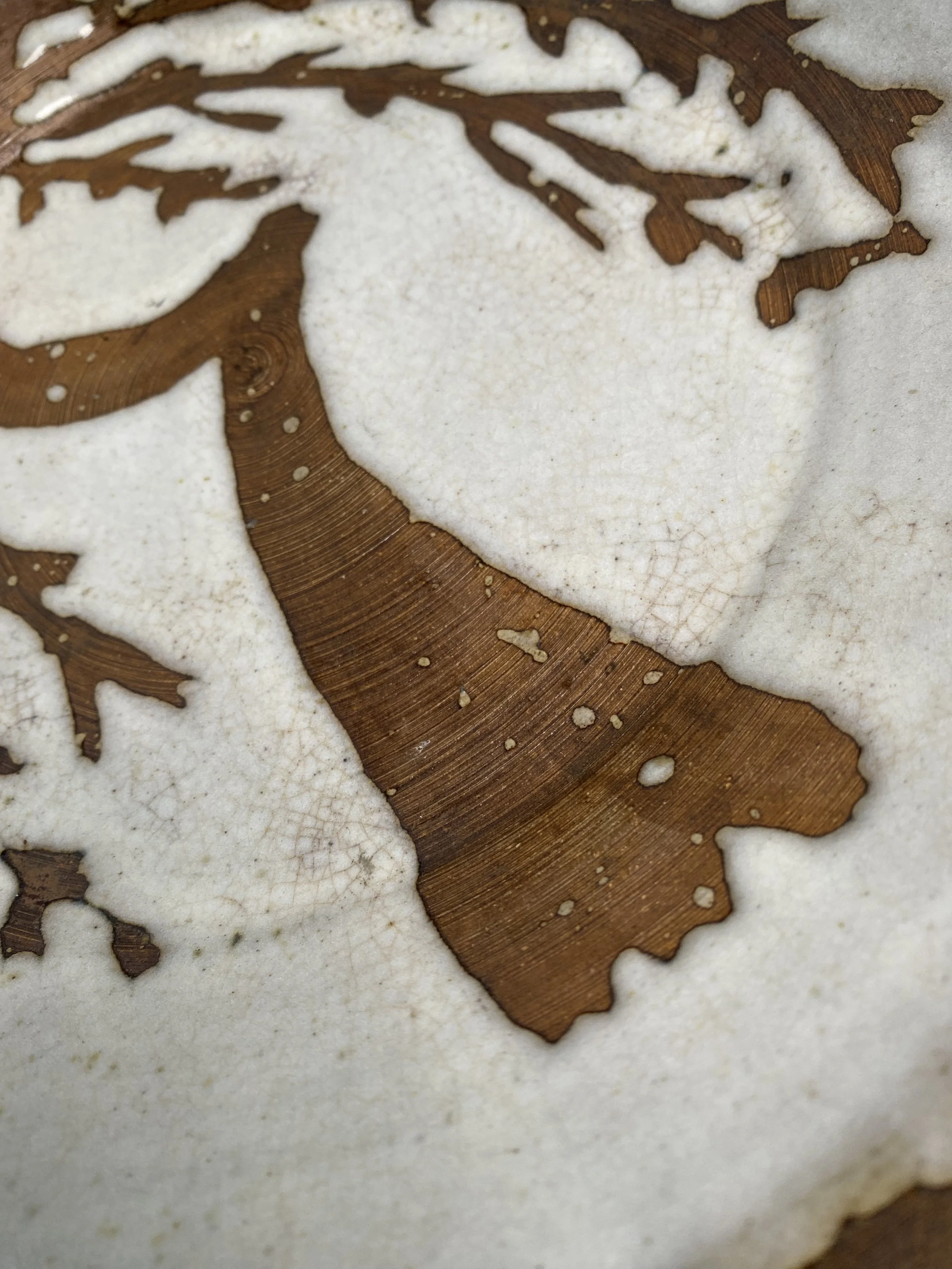
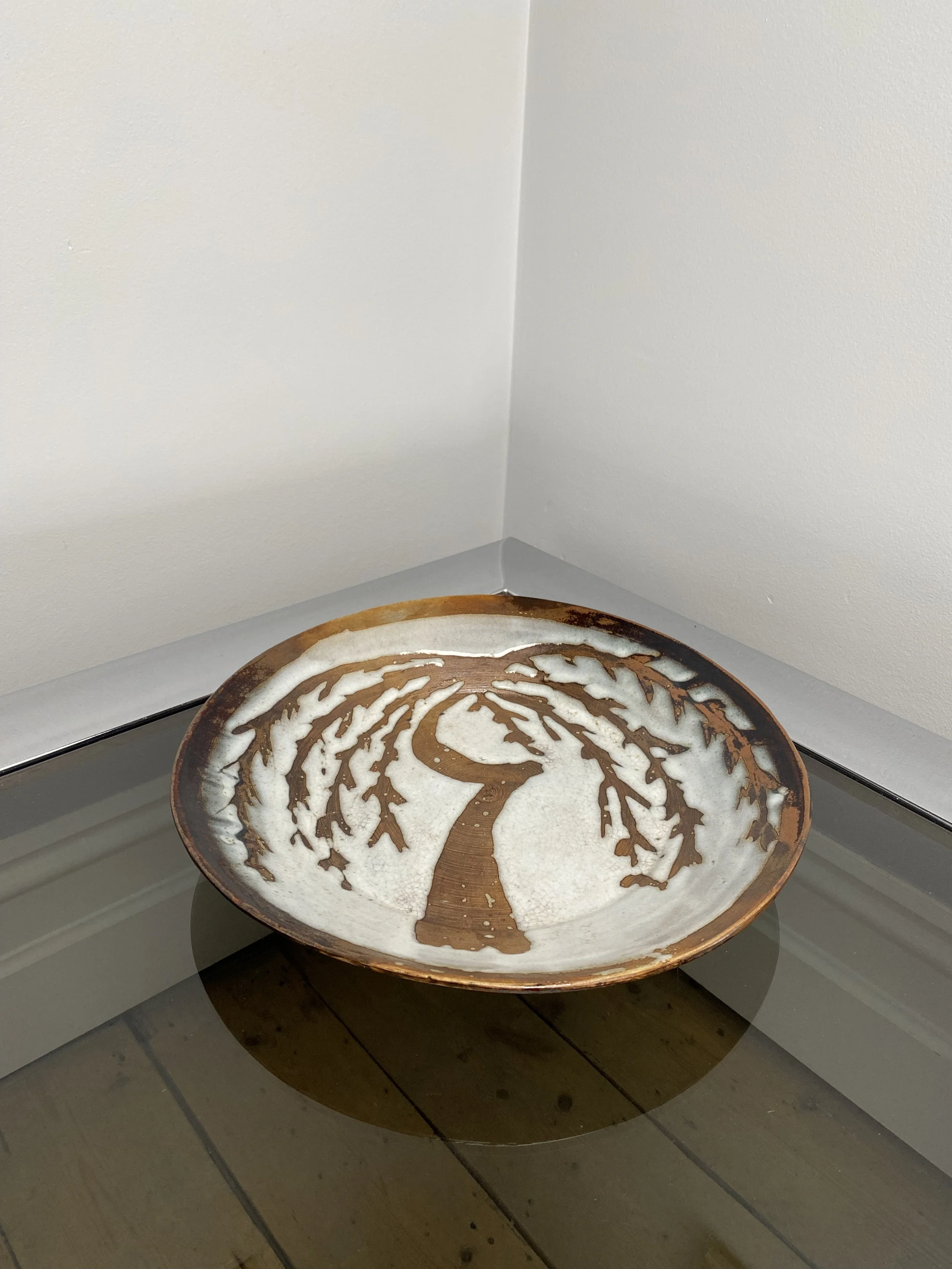
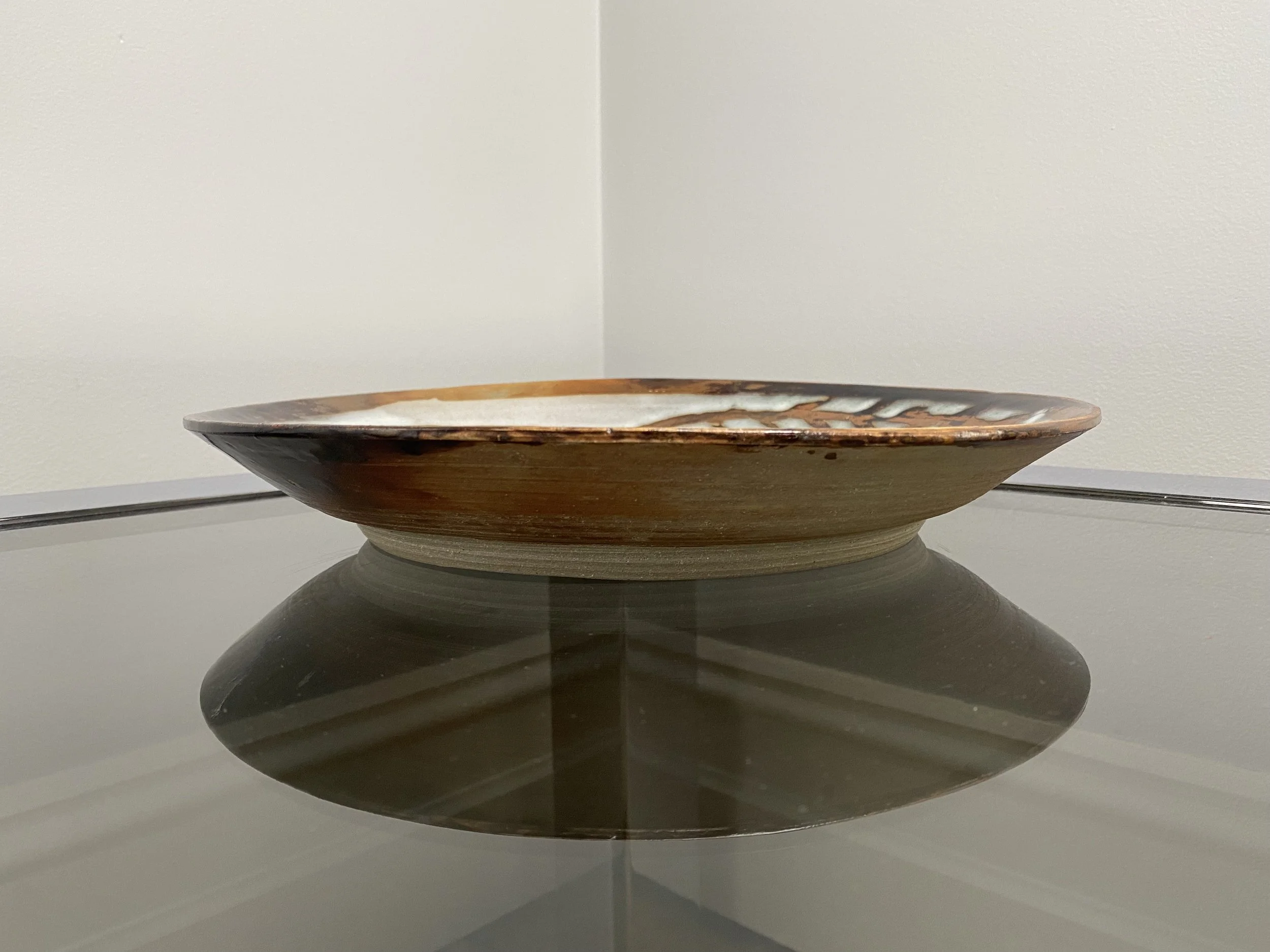
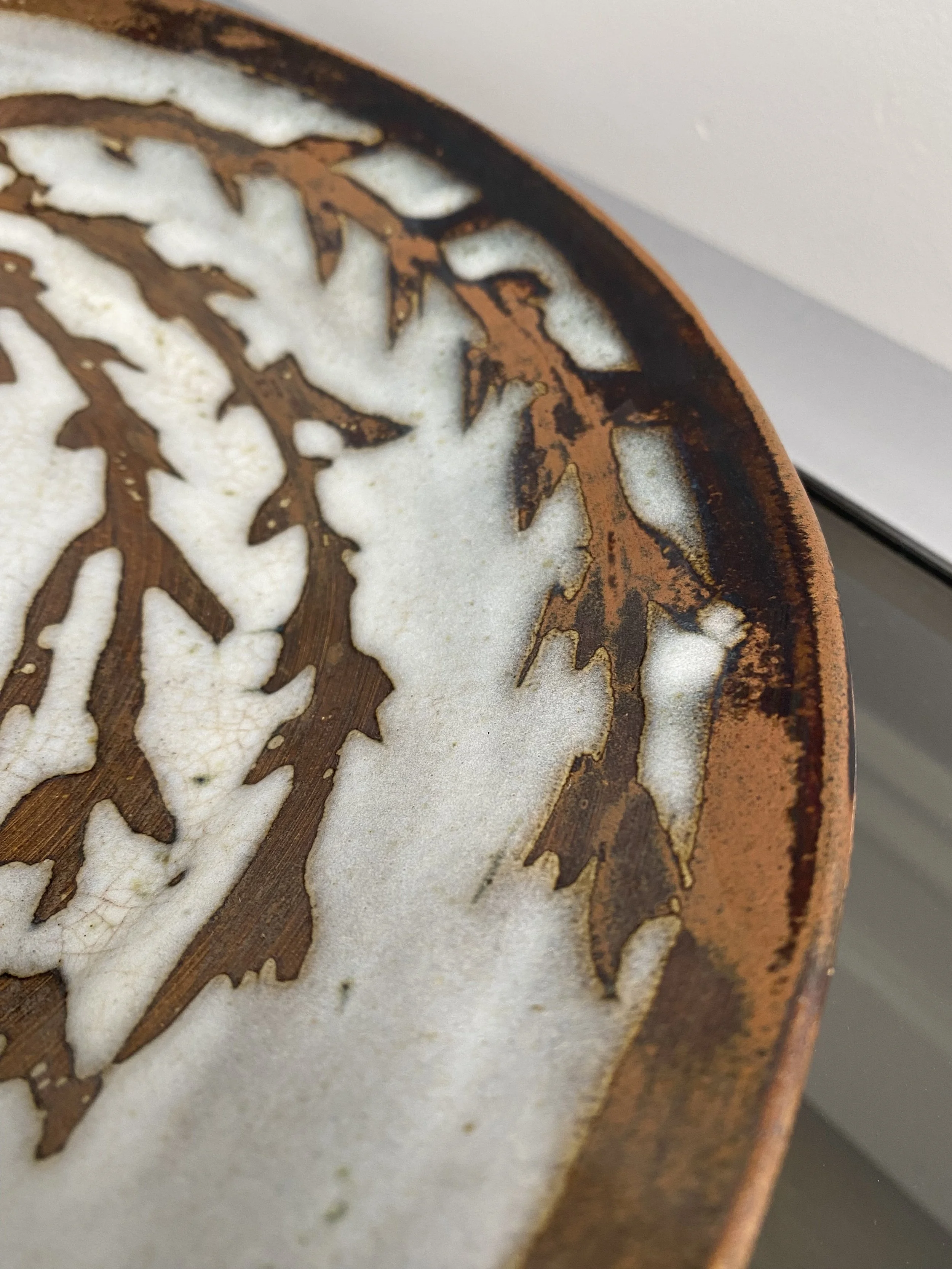

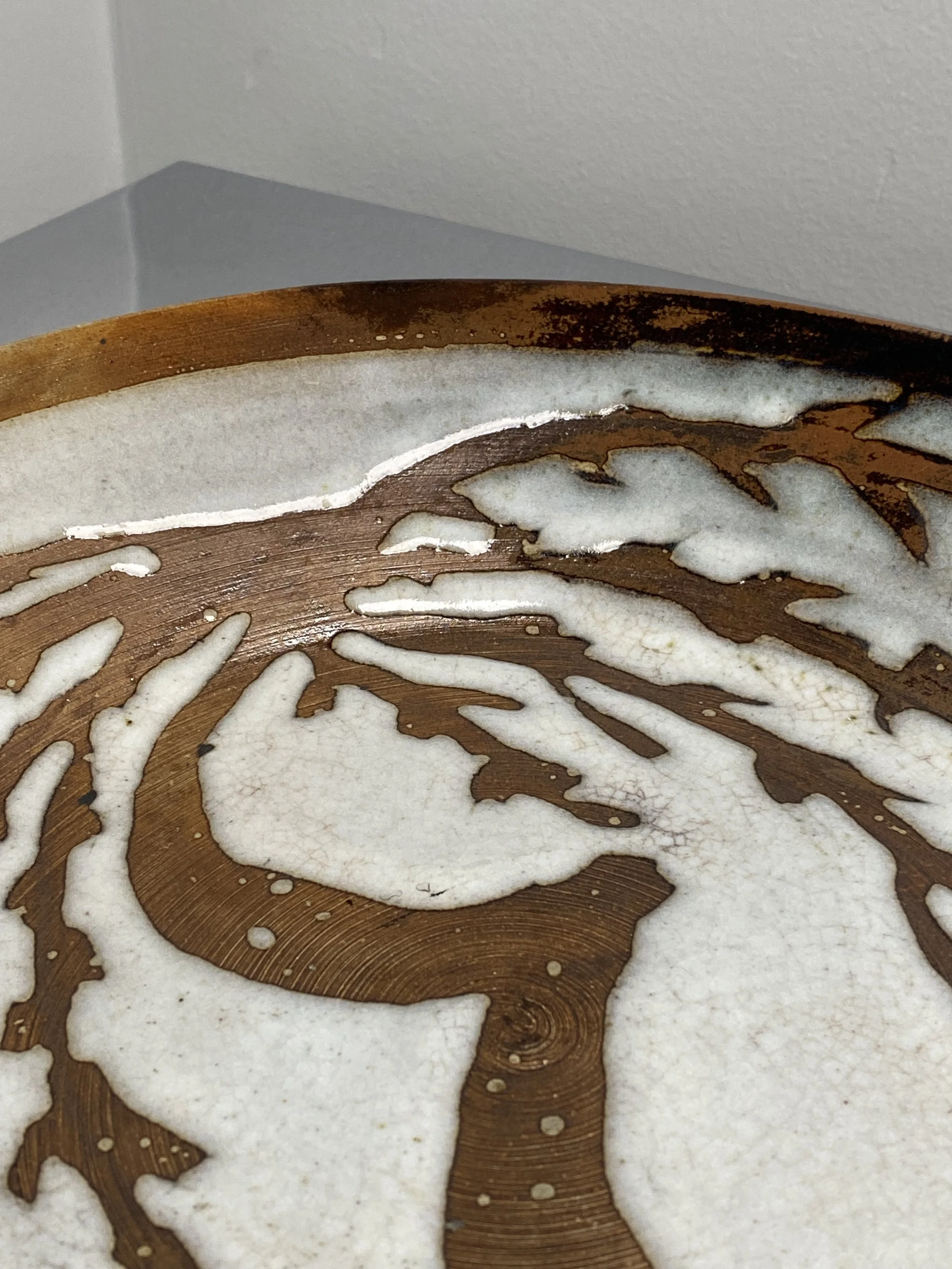

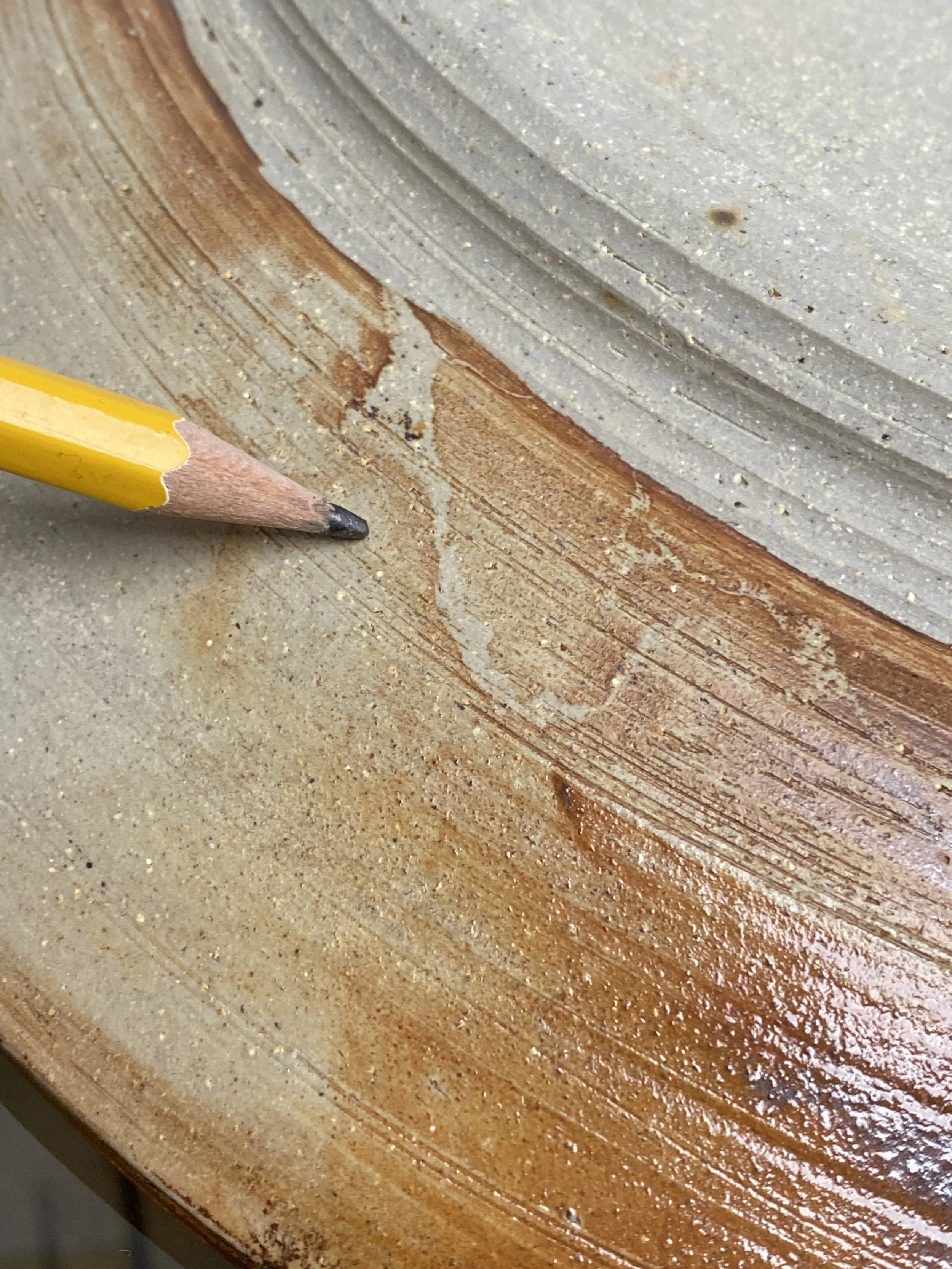
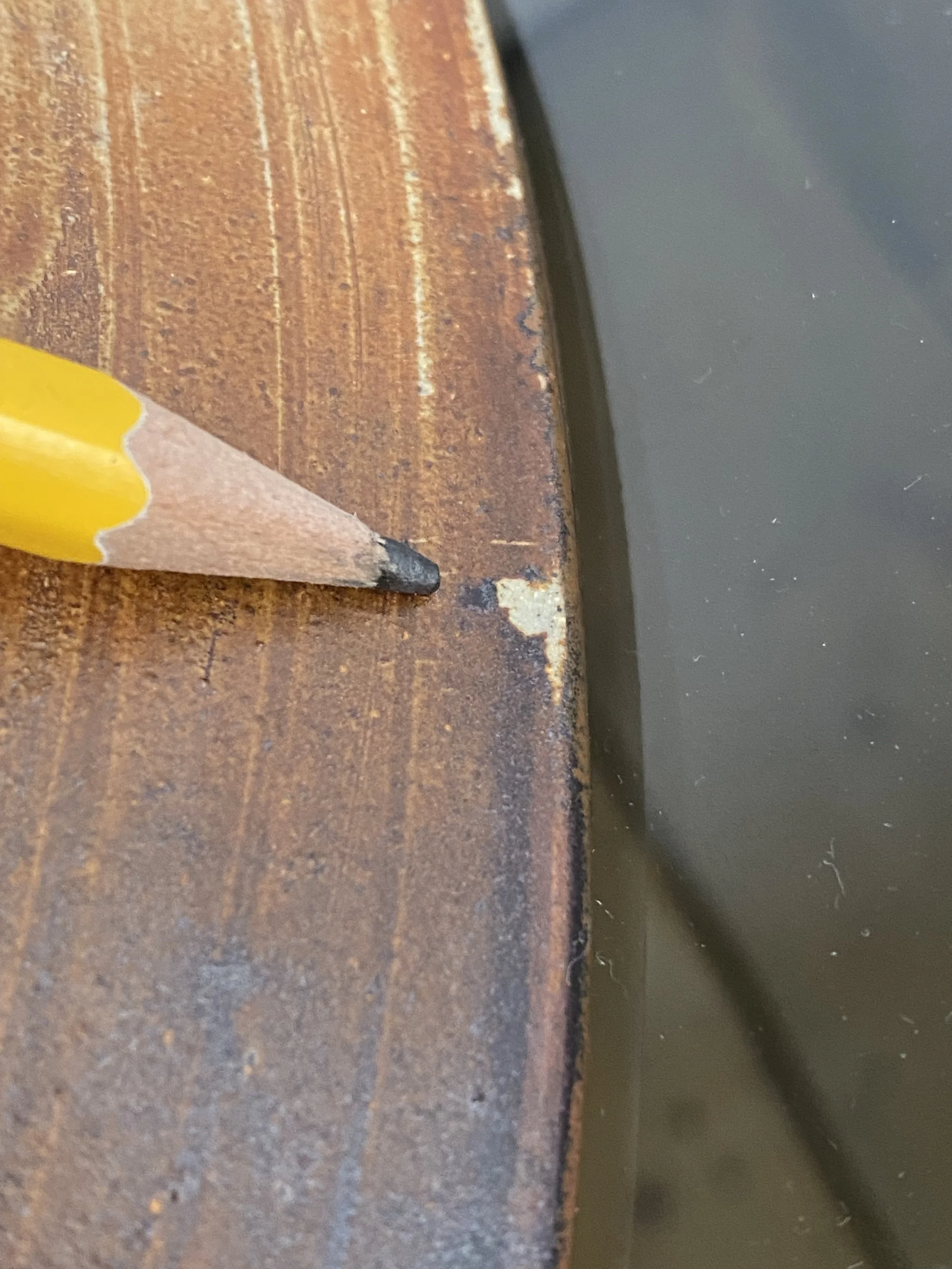
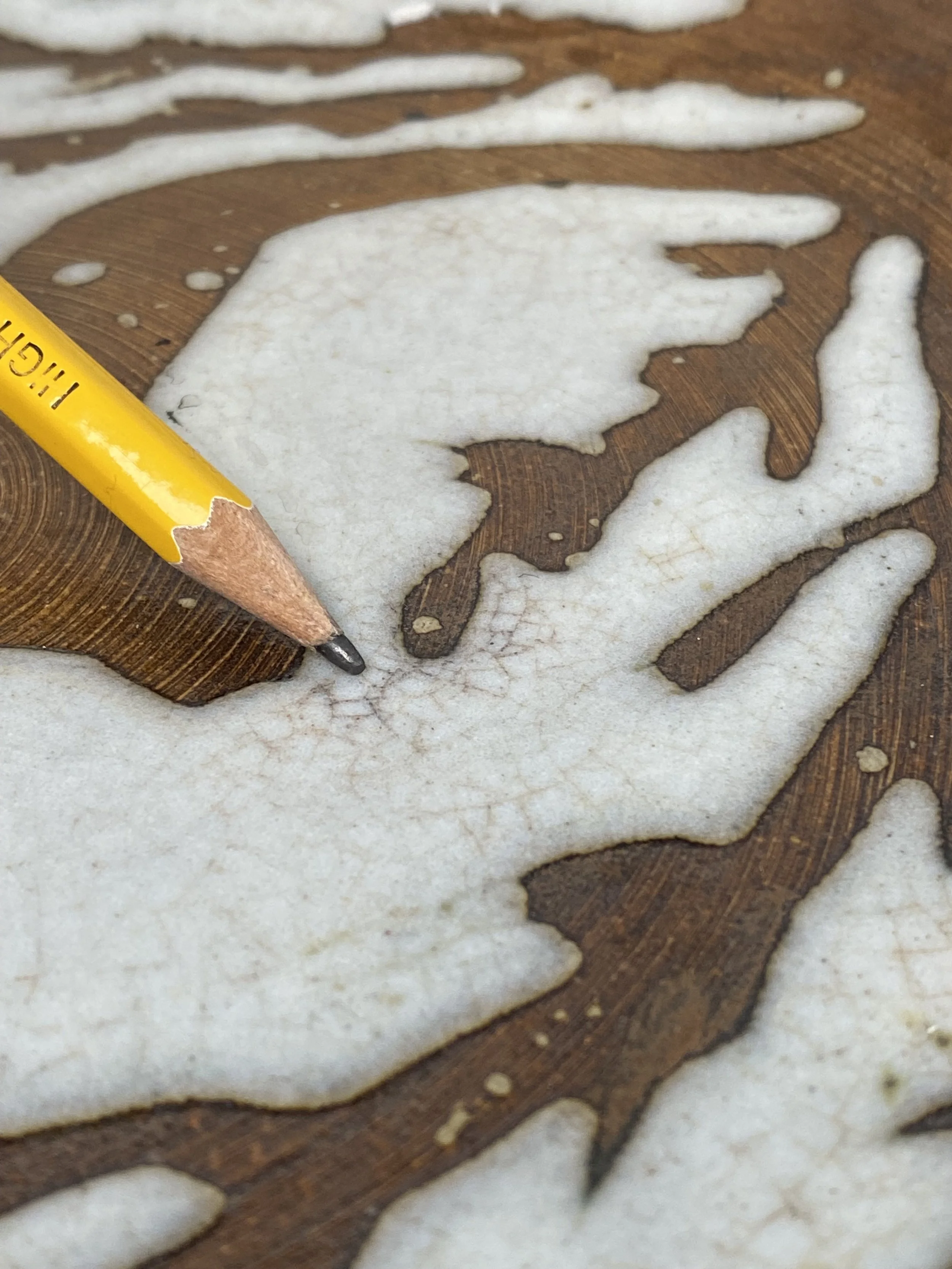


Large Earthenware Studio Pottery Willow Dish After David Leach 1970s
A very attractive large dish, dating to the 1970s. It has all the elements of David Leach pottery - a willow motif, high quality earthenware, decorated using the wax resist method. A lovely styling item, to contrast with cleaner lines and forms, perfect for the organic modern interior.
I love the vigor of the sprouting willow motif and the contrast between the thick white glaze and the fired earthenware. I would suggest using this one as a wall plate or decorative bowl in a living room, rather than having it serve time in the kitchen.
CONDITION:
Note that there is significant crazing in the white glaze. This obvious wear and tear are completely in tune with the style and age of the plate and do not detract. Also, after carefully concluding this is not an original David Leach work, a very small (3 mm) nip to the lip of the bowl was professionally filled, colored and re-glazed. Very hard to spot. The buyer should understand this dish is best saved for decorative use. Avoid high heat. Wash in warm soapy water.
Images including the yellow pencil indicate crazing and production faults. The final image indicates the location of the professional chip repair, colored and re-glazed. Almost impossible to spot it unless you know where.
MEASURES:
32.8 CM diam x 5 cm high
ADDITIONAL INFO:
While all the key decorative elements suggest it may be the work of David Leach, it has no signature or mark. The style of the willow is more exaggerated and dominant than the willow motif in most of Leach's work. For this reason I don't believe it is his work, but it is certainly based on his work and certainly lovely.
Let's look at the first element of similarity to Leach's work - the willow motif. In Leach's work, the motif tends to be figural, ideal and subtle. In this work, the willow appears almost cartoonish - it fills the plate and its sprouting branches arch out from the trunk, rather than languidly drooping.
The second element is the wax resist method in which the willow has been painted in wax and a glaze applied over. During firing the wax burns away, leaving a negative outline. In Leach's original works, the wax negative is fine and delicate. In this platter, the glaze is very thick and the willow boughs exaggerated.
Finally, this earthenware is of good quality and skillfully thrown, however, it is not as subtle and refined as Leach's work. The glaze appears to have been wood-fired, giving lovely rustic variation in color, but there are production faults.
For example, a cloth or hand has touched the glaze on the base before firing, leaving a mark (see images with yellow pencil indicator). The base itself is heavy and has been cut from the wheel and reworked to add a foot or rim. The action of turning the plate over has slightly distorted the rim, which you can see in the images showing its profile. This appears unlike the more refined craft of David Leach's work.
I'm no expert on the work of David Leach, but I see many suggestions that this is the work of an admirer or student, rather than of the man himself. Nevertheless, it's a delightful plate and makes a beautiful decorative piece in it's own right.
This is a great dish from the 1970s, based on David Leach's work, with classic motif, firing marks and white glaze, which will fit right in to a textured and layered Organic Modern style.